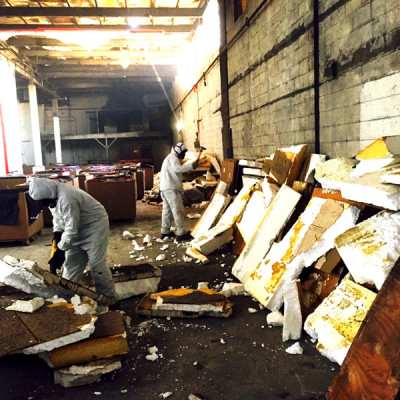Environmental Remediation: A Catalyst for Sustainability
 Contractors separating asbestos containing panels from nonhazardous building materials at a former manufacturing facility. Any materials that adhere to the ACM will be treated as hazardous materials.
Contractors separating asbestos containing panels from nonhazardous building materials at a former manufacturing facility. Any materials that adhere to the ACM will be treated as hazardous materials. Environmental remediation and sustainability don’t always get lumped together. Much more emphasis is placed on green buildings, new and more efficient technologies, and recycling when it comes to sustainable practices and rightfully so. These innovations take us to the next level, allowing us to sustain a balance between the built and natural environment. But what’s the catalyst? At Element, we would argue that it begins with brownfield remediation, be it indoor or outdoor remediation. Environmental consultants and many professionals in the architecture, engineering and construction (AEC) industry often joke that were a necessary evil. We’re the last person you want to call, but when environmental risks are associated with your next business venture you’re glad you did.
Many forward thinking, sustainable development projects are at a standstill until legacy environmental risks are managed appropriately. As you can see, on this Field Day Friday, environmental remediation is not the glamorous side of sustainability, but hazardous materials must be handled in a manner that is protective of human health and the environment. It must be sustainable. Here Element is overseeing the safe removal of friable asbestos material at a vacant former manufacturing facility. A developer has envisioned a new life for this property that will place it back into productive use instead of developing on open space. But before this project can move forward, the legacies it has left behind must be addressed.